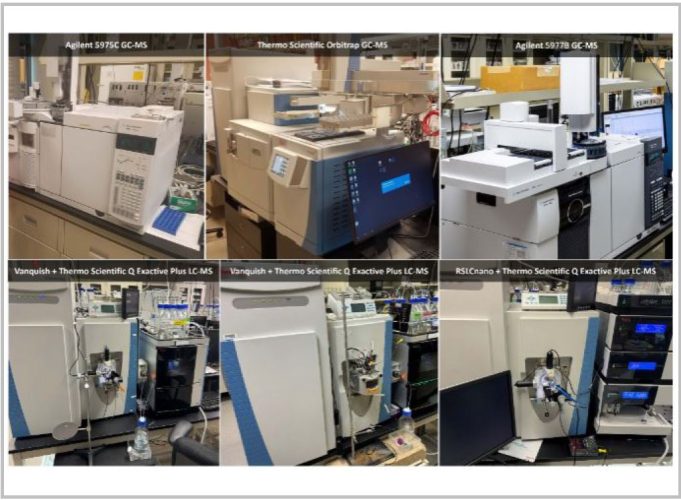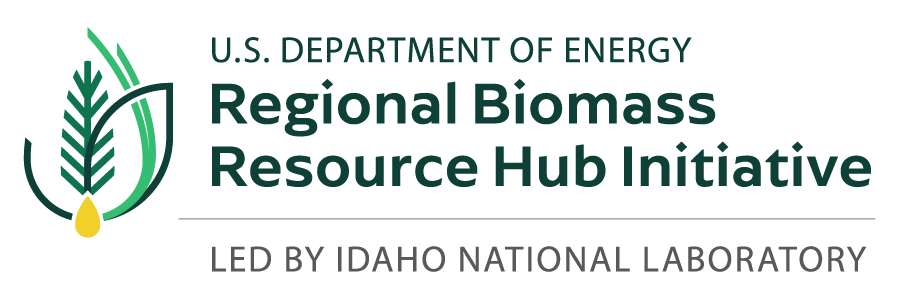Description
Oak Ridge National Laboratory has a range of capabilities and developed methods to systematically characterize plant tissue and exudate metabolites. ORNL has advanced approaches that can be tailored for targeted measurements of distinct chemical compositions (e.g., amino acids, organic acids, phenolics, lipids, etc.) or untargeted measurements to identify compounds more comprehensively—a critical consideration given that modern metabolomics efforts can typically only identify less than 10% of the compounds measured.
Capability Bounds
ORNL has developed and readily uses liquid and gas chromatography-mass spectrometry on a wide-range of materials (plant tissue or exudate) for broad spectum metabolite analyses. These protocols are often adapted and optimized for each measurement. Suitability and performance are determined on a case-by-case basis.
Unique Aspects
These approaches take advantage of ORNL’s high resolution mass spectrometry-based metabolomics facilities and the Compute and Data Environment Systems (CADES). In conjunction, these capabilities provide the necessary measurements and computational resources to aggregate and systematically characterize measurements across diverse studies of lab-to-field experiments to identify reoccurring known and unknown metabolites.
Benefit
These capabilities, and the associated expertise at ORNL, are readily used to provide detailed information regarding the metabolites observed, relatedness between observed metabolic profiles, and their importance to shaping local environments. Additionally, these capabilities can be adapted for stable isotope labeling to study system-wide metabolic regulation.
Capability Expert(s)
Paul E. Abraham, Robert L. Hettich, Timothy Tschaplinski

References
Tschaplinski, T. J.; Abraham, P. E.; Jawdy, S. S.; Gunter, L. E.; Martin, M. Z.; Engle, N. L.; Yang, X.; Tuskan, G. A., The nature of the progression of drought stress drives differential metabolomic responses in Populus deltoides. Annals of Botany 2019, 124 (4), 617-626.
de Freitas Pereira, M., D. Cohen, L. Auer, N. Aubry, M.-B. Bogeat-Triboulot, C. Bure, N. L. Engle, Y. Jolivet, A. Kohler, O. Novák, I. Pavlovic, P. Priault, T. J. Tschaplinski, I. Hummel, M.-N. Vaultier, and C. Veneault-Fourrey. 2023. Ectomycorrhizal symbiosis prepares its host locally and systemically for abiotic cue signaling (opens in new window). The Plant Journal (published online Sept. 17, 2023)
Dove, N.C., A.A. Carrell, N. Engle, D.M. Klingeman, M. Rodriguez, M.Z. Martin, T.J. Tschaplinski, W. Muchero, C.W. Schadt, and M.A. Cregger. 2022. Relationships between Sphaerulina musiva infection and the Populus sp. microbiome and metabolome (opens in new window). mSystems 7 (4)
Barros, J., H.K. Shrestha, J.C. Serrani-Yarce, N.L. Engle, P.E. Abraham, T.J. Tschaplinski, R.L. Hettich, and R.A. Dixon 2022. Proteomic and metabolic disturbances in lignin-modified Brachypodium distachyon (opens in new window). The Plant Cell koac171
Bewg, W., S. Harding, N. Engle, B. Vaidya, R. Zhou, J. Reeves, T. Horn, N. Joshee, J. Jenkins, S. Shu, K. Barry, Y. Yoshinaga, J. Grimwood, R. Schmitz, J. Schmutz, T.J. Tschaplinski, and C.-J. Tsai. 2022. Multiplex knockout of trichome-regulating MYB duplicates in hybrid poplar using a single gRNA (opens in new window). Plant Phys. 189: 516–526
Mudbhari, S.; Lofgren, L. A.; Appidi, M. R.; Vilgalys, R.; Hettich, R. L.; Abraham, P. E., Decoding the chemical language of Suillus fungi: genome mining and untargeted metabolomics uncover terpene chemical diversity. bioRxiv 2023, 2023.11. 20.567897.
Gopalakrishnan Meena, M.; Lane, M. J.; Tannous, J.; Carrell, A. A.; Abraham, P. E.; Giannone, R. J.; Ané, J.-M.; Keller, N. P.; Labbé, J. L.; Geiger, A. G., A glimpse into the fungal metabolomic abyss: Novel network analysis reveals
